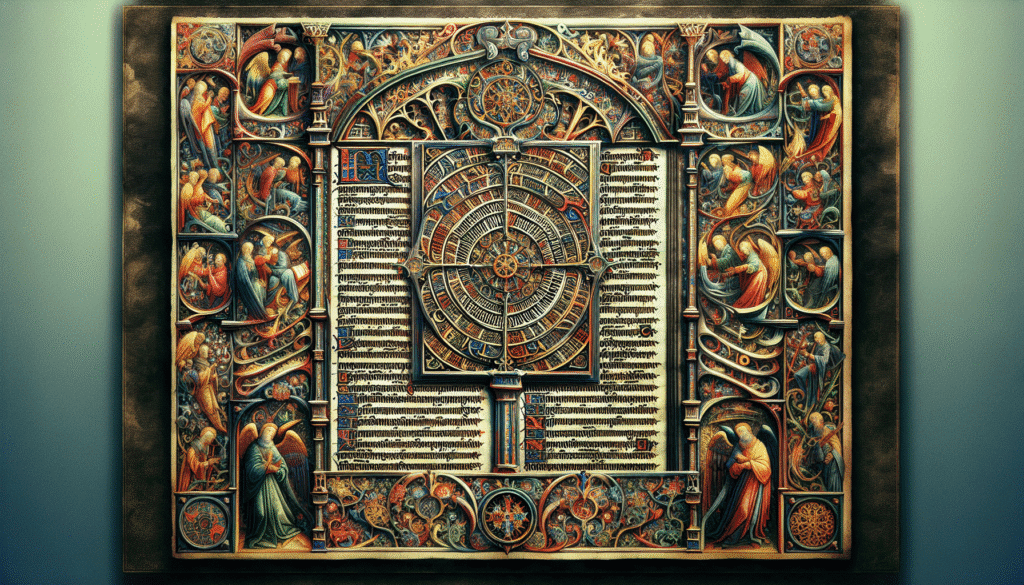Have you ever wondered how much of the Bible as we know it today is exactly as it was written thousands of years ago? There’s more to Scripture than meets the eye, and it’s fascinating to consider the layers of history, translation, and human intervention that have shaped these sacred texts. As someone who’s been steeped in theological studies—let’s say a “PhD in Theology”—I find it fascinating to explore which parts of the Bible may actually have been added later, long after the original texts were penned.
Why does this matter, particularly in 2025? In a time when truth is constantly scrutinized, understanding the authenticity and origin of influential texts like the Bible becomes not just an academic curiosity but a critical part of appreciating and interpreting the past. Whether you’re a theologian, historian, or simply someone with an insistent curiosity, diving into biblical interpolations allows us to see the Bible not as a static work but as a living document that has shifted and morphed through time.
TL;DR
Biblical interpolations are additions made to the original texts of the Bible over centuries. These insertions can offer insight into cultural and theological developments throughout history. Key biblical interpolations include the Comma Johanneum, the Pericope Adulterae, and the longer ending of Mark. Understanding these interpolations is crucial for appreciating how theological perspectives have evolved. The topic is significant today due to ongoing debates over the authenticity and interpretation of scriptural passages.

What is Biblical Interpolation?
Interpolation is like adding footnotes, except these footnotes become inseparable from the main body of the work. In biblical terms, interpolation refers to passages that were inserted into Scripture after the original texts were completed.
Defining Interpolation
An interpolation can refer to words, phrases, or entire sections added to a manuscript by someone other than the original author. These additions can be intentional or a simple product of the many translations and transcriptions over the centuries.
The Role of Scribes
Scribes, tasked with copying texts long before the invention of the printing press, played a critical role. Sometimes they made errors or consciously modified the text to reflect contemporary understanding or theological views. Imagine transcribing a lengthy manuscript by hand and deciding that a little clarity or doctrinal alignment is necessary.
To appreciate how these interpolations came to be, you might picture a vast room filled with scrolls and manuscripts—a scene reminiscent of ancient Alexandria. In such settings, meticulous, painstaking work with significant room for human error was the norm.
Notable Examples of Biblical Interpolations
There are several recognized interpolations in the Bible, and understanding them can enrich both scholarly and personal interpretations of the text.
The Comma Johanneum
- What is it?: This is a clause found in 1 John 5:7–8, added to emphasize the Trinity.
- Why it matters: It shaped Trinitarian teachings and debates, although early manuscripts like the Codex Sinaiticus do not include it.
- Interesting note: Its absence in initially recognized Greek texts and subsequent Latin versions highlights its later addition.
The Pericope Adulterae
- What is it?: The famous story in John 7:53–8:11 about Jesus and the woman taken in adultery.
- Why it matters: While it supports themes of forgiveness and non-judgment, its omission in earlier manuscripts suggests later insertion.
- Interesting detail: This passage’s absence from the earliest manuscripts raises questions about its originality yet it remains popular for its powerful moral message.
The Longer Ending of Mark
- What is it?: Mark 16:9–20, which describes post-resurrection appearances of Jesus.
- Why it matters: Excluded from significant ancient manuscripts, this section influences theological teachings on resurrection.
- Historical context: It’s much like a P.S. in a letter. It becomes crucial due to the early Gospel ending abruptly at Mark 16:8.

How Scholars Detect Interpolations
Identifying interpolations is a meticulous, detective-like process. Scholars approach the texts with tools and methods perfected over centuries.
Textual Criticism
- Definition: This field assesses manuscripts for clarity on original writings versus later additions.
- Methods: Comparative analysis of different manuscript versions, looking for textual variants and omissions.
- Outcome: Conforms to the quest of finding the most authentic text representative of the original authors’ intent.
Manuscript Evidence
- Codex Sinaiticus vs Codex Vaticanus: Comparing ancient works like these provides insights into textual variances.
- Palaeography: Studying script styles over time helps date when interpolations might have occurred.
- Field experience: Imagine leafing through manuscripts, the parchment yielding centuries of guarded secrets.
Implications for Theology and Everyday Beliefs
Biblical interpolations don’t just impact theologians; they play a role in shaping both institutional and personal faith narratives.
Church Doctrine
- Trinitarian Controversies: Interpolations have fueled historic debates and doctrinal developments.
- Liturgy and Practices: Decisions on which interpolations to embrace or ignore affect religious practices and teachings.
Personal Interpretations
- Faith and Understanding: Knowing about interpolations can either challenge or deepen faith.
- Study and Reflection: Encourages a nuanced view of scripture—a necessity for modern believers navigating complex theological landscapes.
Why Does This Matter Today?
In a world replete with religious diversity and interpretation, knowing which parts of the Bible might have been augmented is invaluable.
Modern Relevance
- Digital Accessibility: Internet dissemination of scholarly works and ancient texts has democratized access to knowledge.
- Cultural Dialogue: Equip leaders and laypeople alike with nuanced insights in interfaith discussions.
Fostering Informed Faith
- Educated Believers: Promotes an understanding that supports respectful discussions about faith.
- Interfaith Harmony: Aids inter-religious dialogues, emphasizing mutual respect and shared scholarly interests.
FAQ
What are biblical interpolations?
Biblical interpolations are additions made to the Bible’s original texts, often by later scribes or translators. These changes can take the form of words, phrases, or entire sections. Detecting interpolations relies on textual criticism, a field that compares various manuscript versions for discrepancies.
Why were interpolations added to the Bible?
Interpolations were often added for clarity, doctrinal support, or to align texts with prevailing theological viewpoints. Scribes sometimes added them unintentionally through transcription errors or misinterpretations, while at other times, they were deliberate.
How do scholars identify interpolations?
Scholars use textual criticism, examining ancient manuscripts such as Codex Sinaiticus and Codex Vaticanus, to identify interpolations. They look for inconsistencies and compare textual variants across different versions.
Are biblical interpolations widely accepted?
Acceptance varies. Some denominations embrace interpolations for their doctrinal alignment, while others exclude them as later additions. Knowledge about interpolations continues to grow and evolve through scholarly work.
Do interpolations change the core message of the Bible?
While interpolations can affect specific interpretative details, the core theological and moral messages of the Bible generally remain consistent. Understanding interpolations offers deeper insight into how biblical teachings have been interpreted over time.
People Also Ask
What makes biblical interpolations controversial?
Interpolations raise issues of authenticity and influence theological debate by questioning which parts of the Bible were divinely inspired versus human additions.
How commonly recognized are interpolations by modern scholars?
Most biblical scholars acknowledge certain well-documented interpolations, such as the Comma Johanneum and the longer ending of Mark.
Can biblical interpolations be undone?
Once identified, scholars may choose to exclude or include interpolations in modern Bible translations, providing context for their presence.
Why do interpolations matter to modern readers?
Interpolations influence how scriptures are interpreted, affecting both personal faith and communal religious practices.
What’s an easy way to understand biblical interpolations?
Think of biblical interpolations like editorial footnotes that ended up embedded in the main text; they offer added emphasis or clarity.
Understanding biblical interpolations offers a richer perspective on Scripture, acknowledging the dynamic history of one of the world’s most influential texts. These insights not only enhance theological study but also contribute to a broader appreciation of the Bible’s multifaceted journey through time.



